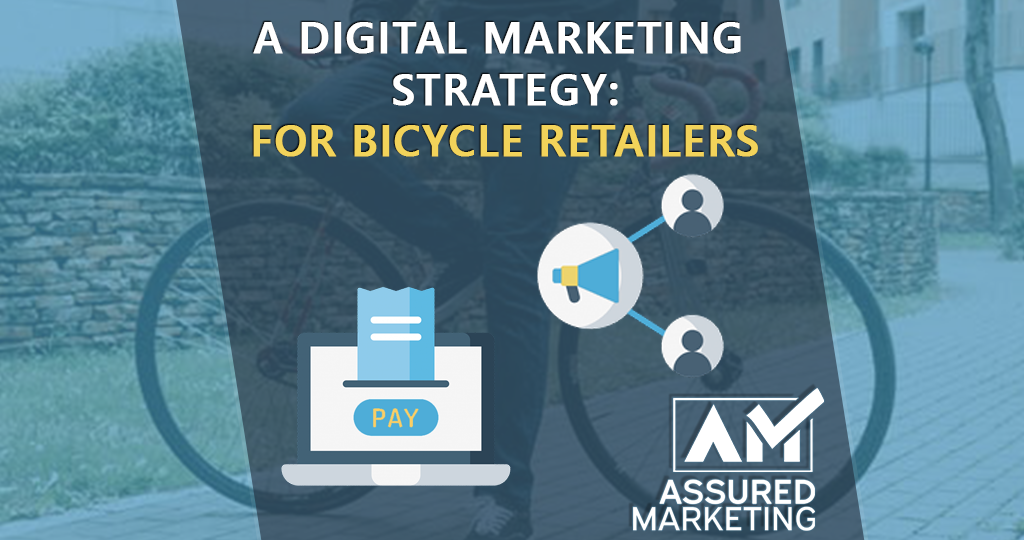According to the continued market analysis published by IBISWorld, the retailing of bicycles – both online and in-store – is the 4th fastest growing industry in the UK during the previous 5 years (2016-2021). Industry leader Halfords have in fact reported 49.1% year-on-year revenue growth over 9 months through December 2020.
What circumstances so often begin to create is an oversaturated market, full of aspiring businesses aiming to capture a percentage of the growing market share. Whilst an attractive option for an aspiring entrepreneur to consider, trying to stand out in an industry quickly becoming crowded is tough.
So, with that in mind, this article is going to look at some of the most effective marketing options available to bicycle retailers – with the aim of cutting through the noise and really beginning to scale in this rapidly expanding sector.
Establish Recognisable USPs
Before looking at the most useful elements that you can reflect about the business onto its website, social media and other marketing materials, you first need to identify which of these elements set your bike store apart from the others in this saturated market.
It’s an obvious fact that when entering an existing market (especially one so crowded) there needs to be key identifiers that consumers attribute to your business over that of the competition. So, therefore, look at what sets you apart. Are you offering better value for money? Do you offer more niche types of bicycles or cycling equipment, not normally found in major retailers stores? Have you established the business off the back of your own passion for cycling? All of these can be reflected as unique selling points (USPs) that set you apart from other businesses operating in the sector.
An E-Commerce Platform
In the wake of the 2020/21 Covid-19 Pandemic, there has been a great shift from high street to virtual high street and online retail. Whilst, yes, this was out of necessity – consumer trends are showing a large proportion of customers are choosing to remain using digital retail platforms as their preferred method of purchase in many cases.
With these factors in mind, any aspiring (or existing for that matter) bicycle retailer should be offering a platform (website) for customers to commit to the business online – as well as in-store if the business has a physical location.
With platforms such as Shopify are more than suitable for these businesses, when it comes to having the correct levels of customizability for other digital marketing tactics such as SEO – WordPress would certainly be the better option. With websites able to be built on themes and e-commerce solutions such as WooCommerce being implemented, it is now easier than ever for business owners to make a start on this themselves, so long as they have some capability in website design.
Local SEO
There is an argument that local SEO is perhaps only beneficial with those cycle retailers which have a physical store location in a particular service area. Though that isn’t true by any stretch of the imagination. SEO, even in a purely local sense, can be an incredibly beneficial tactic for bike retailers to adopt early on in their marketing strategy.
As for any new online only retailer in this sector – one of the main issues that they will encounter would be logistics around delivery to customers. Many of these such businesses will, in all likelihood, begin on a smaller scale to deliver locally – and thus need to implement local SEO in the beginning whilst they begin to implement stock management systems and develop relationships with reputable couriers in order to begin a push for more nationwide/global sales.
The listing of the website on local directories is one way to start, but also ensure that content produced onto the website is reflective of both the location in which the business operates and also how large of a service area it provides stock to. Then look at digital PR from local media outlets, which publications locally could really benefit the business from a digital PR perspective and how can you entice them to feature the business in this way.
Social Media
Cycling is a hobby with a huge following, and with a huge following comes the potential for a business which retails their most desired products to target them, engage with them and ultimately convert them on social media. This could be done through a whole host of different techniques, but the main focus should be on cultivating an engaging brand that consumers feel a part of and on the other side – using targeted social media advertising to really push the different cycling products at new potential customers for the business.
Taking the organic approach to building a social media audience, on Facebook, the admins and page should look at both local groups and also more wider interest groups which are filled with members interested in cycling as either a sport or hobby. On Instagram use visual content of the products you sell, alongside pictures/videos of people taking part in cycling events to keep those with a keen interest engaged with the business as a whole.
In terms of paid social media advertising, once you have established a core demographic, their interests and what kind of behaviour they have on the different platforms being used to promote the business. Look to take advantage of advanced social media advertising targeting in ways that promote the products, services and content of the business to potential new and lapsed customers.
Reflecting The Businesses USPs
Earlier in the article, the concept of developing unique selling points (USPs) was discussed as a way to ensure the business is set apart from its competitors. Then addressing the different digital channels which could be used in order to then drive brand awareness and increase sales. Well, what should be considered is the reflection of the business’ USPs onto these channels. Specifically Social Media.
Here is where the core target demographics are going to identify reasons to choose your brand over others, and this is why it’s vital that every piece of content that you produce – for both your website and social media – has these USPs at heart. With so much variety in such a crowded industry, establishing clear reasons of which you are better than your competitors is vital in order to stand out online.


0 Comments